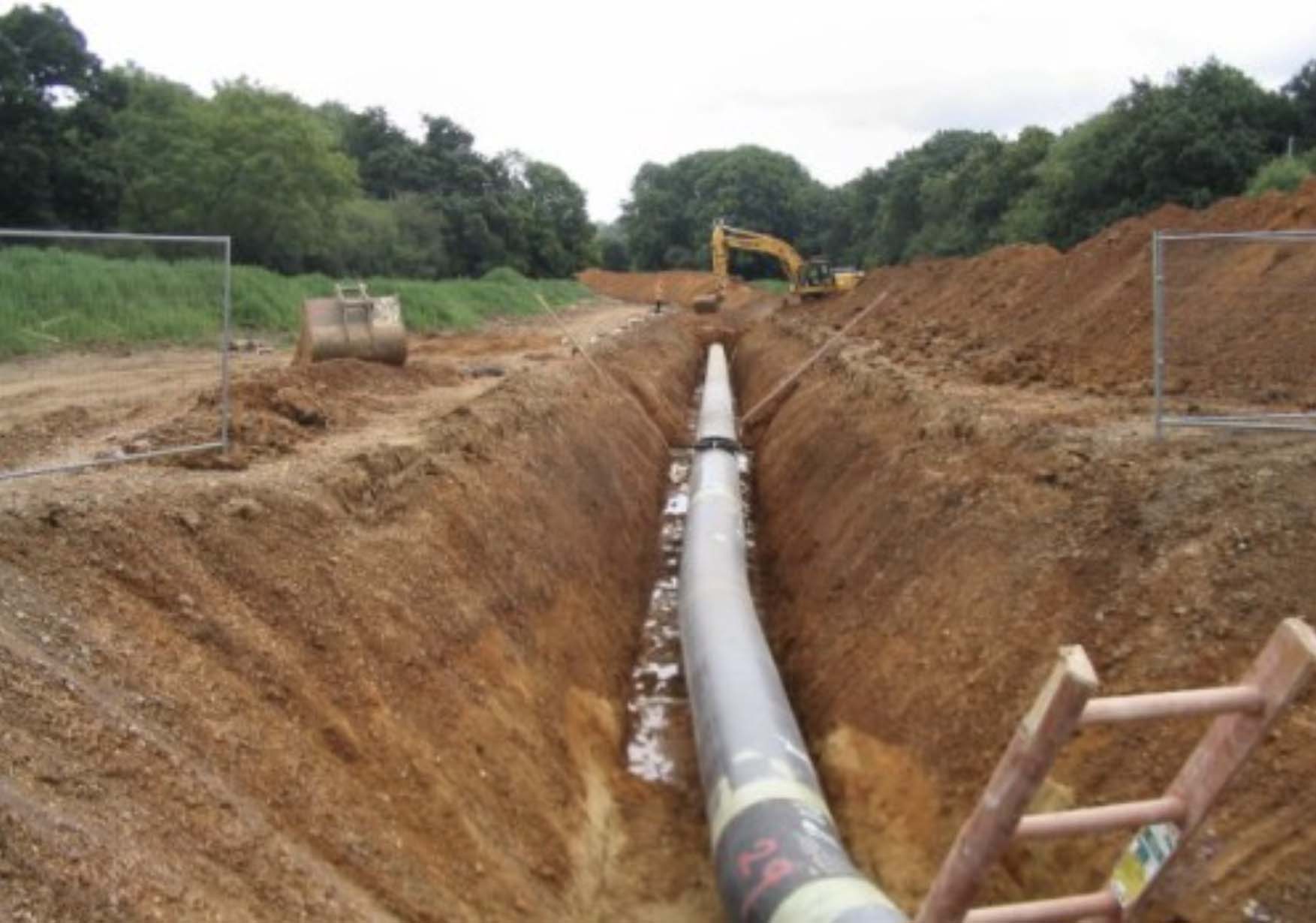Some Indigenous leaders and youth are posting roadblocks and mounting legal challenges to a planned gas pipeline in Northern British Columbia while the Nisga’a Nation, as the project’s partial owner, pushes back.
At the centre of the dispute is a nearly 10-year-old environmental assessment of the planned Prince Rupert Gas Transmission (PRGT) pipeline, one that Gitanyow hereditary chiefs say is outdated—and set to expire this November. The pipeline was approved based on that assessment, on condition that the provincial government considers the project to have “substantially started” before the expiration, reports The Narwhal. Construction began August 26, 2024.
Fearing its environmental impacts and the acceleration of the climate crisis, hereditary chiefs who signed pipeline community benefits agreements in 2014 are now resisting the project, writes Gitanyow Hereditary Chiefs reporter LaurieGHC.
“This project doesn’t make any sense,” said Hereditary Chief Gamlakyeltxw (Wil Marsden), speaking from a blockade established on a forest service road in his territory to bar PRGT equipment. At the blockade, a ceremony was held to burn the old pipeline benefit agreements.
“Both the fisheries and climate reviews found there was insufficient evidence to substantiate the proponent’s claims that the project could achieve net-zero goals in terms of greenhouse gas emissions and the provincial government’s assertion that the project would have no impact on Nass River fisheries,” the hereditary chiefs said a statement.
The chiefs first raised concerns that the agreement was outdated last fall, saying major changes to the pipeline’s route did not reflect the original agreement they signed.
“Despite the chiefs’ concerns and supporting scientific evidence, their objections have been ignored,” says the statement. “PRGT is hastening construction to pre-empt the expiration of its environmental assessment certificate on November 25, 2024.”
The PRGT pipeline would span 800 kilometres—and cross more than 1,000 waterways, some of which are major salmon-bearing rivers—to bring gas from northeastern B.C. to export facilities on the coast. The project was originally owned by TC Energy, which also owns the controversial Coastal GasLink pipeline. TC Energy conducted the environmental assessment and signed the original agreements for the Prince Rupert pipeline, but recently sold the project to the Nisg̱a’a Lisims Government and Texas-based Western LNG, writes The Narwhal.
Nisg̱a’a Lisims and Western LNG, along with Calgary-based Rockies LNG, are also partners for the proposed Ksi Lisims floating LNG facility, which is undergoing environmental assessment and has not yet been approved.
The pipeline has also faced legal challenges. Recently, the Gitxsan Nation designated the Kispiox Band council as representatives to seek a judicial review for overturning the BC Energy Regulator’s approval of the pipeline, arguing that the regulator had only done a cumulative effects assessment for the section passing through Nisga’a Lisims land rather than the entire project. The regulator stated that it had only approved construction for that section, not the rest of the pipeline, writes the Globe and Mail.
The Nisga’a Lisims government had approved starting construction on August 24 on their lands, which border Gitanyow territory. The Gitanyow hereditary chiefs responded with their roadblock, which the Nisga’a Lisim government criticized, while urging calm and peace.
Questions have also been raised about the tactics used to acquire the signatures on the 2014 benefit agreements, writes The Tyee. And some people have argued that the new circumstances of the project mean the agreements do not count as consent or consultation within the context of the provincial Declaration on the Rights of Indigenous Peoples Act.
“We (the hereditary chiefs) didn’t want to say yes or no right off the bat,” said Hooxi’I, Kolin Sutherland-Wilson, of the house of Tsi’basaa, the elected chief councillor of the Kispiox Nation.
“We were in no rush (to sign on back in 2014) because we knew it was going to cause conflict in the community. But the government said whether we like it or not they’re going to ram it down our throats. And what do we do in a situation like that?”
Resistance to the pipeline includes Indigenous youth who say much has changed since the original agreements were signed 10 years ago, including updated information on the effects of climate change and burning fossil fuels. They say they did not have a voice in a project that will have a drastic effect on their future.
“The youth and future generations were left out of [the pipeline] conversations, and I’m scared for my future,” said Drew Harris, who organized a youth-led community meeting August 19 to oppose the pipeline. Harris introduced herself as Wet’suwet’en on her mother’s side and Gitxsan on her father’s side.
“Our rivers are drying up. Our fish counts are going down. If we continue to contaminate our waters, pollute our air, and deplete our food sources, where does that leave us?”
Read the original article by Christopher Bonasia at The Energy Mix.
